All About Comma and Question Mark Butterflies
Updated: Aug. 04, 2022
Study your punctuation and learn about the comma butterfly and question mark butterfly. Look at their wings to see how they got their names!

One of my favorite groups of butterflies are known as the “anglewings” due to their interesting wing shapes. These fliers are in the Polygonia genus—nine of which are found in North America. Polygonia is Greek for many angles. This genus is also known collectively as the commas because of the white marking on their underwings. Let’s learn some fascinating facts about the comma butterfly and question mark butterfly.
Check out 10 beautiful butterfly pictures you HAVE to see.
Unique Punctuation Wing Markings
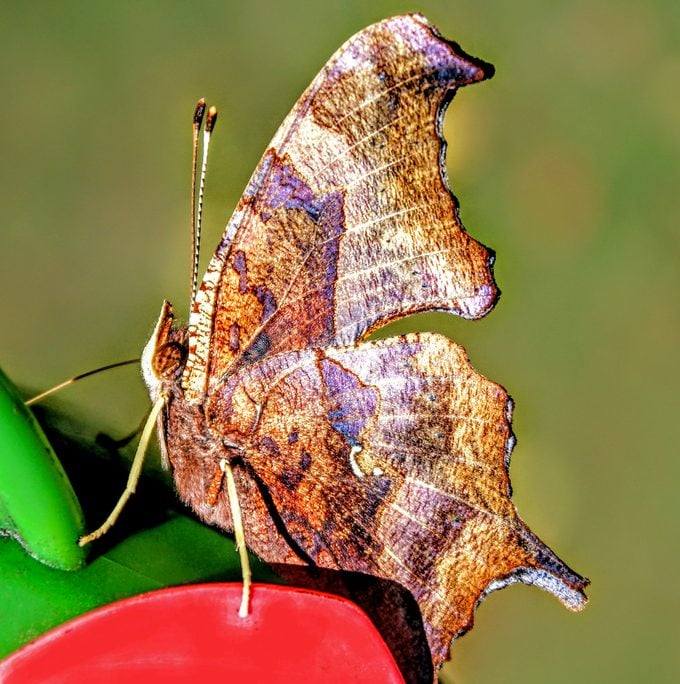
With their wings closed, these butterflies look a little drab but you can see their long wingtips and the markings that give them their name. With their wings open they show gorgeous dark orange and black coloration (more orange in winter). Look closely at their brown and tan hindwings to find the punctuation marks they’re named for. A comma butterfly has a white or silver mark similar to a comma, while a question mark butterfly has an extra dot underneath.
“I thought this butterfly (above) was a leaf! It’s called a question mark because of the white markings on its wings,” says Birds & Blooms reader Mary Gabriel.
Learn how to attract butterflies in 9 easy ways.
Wingspan
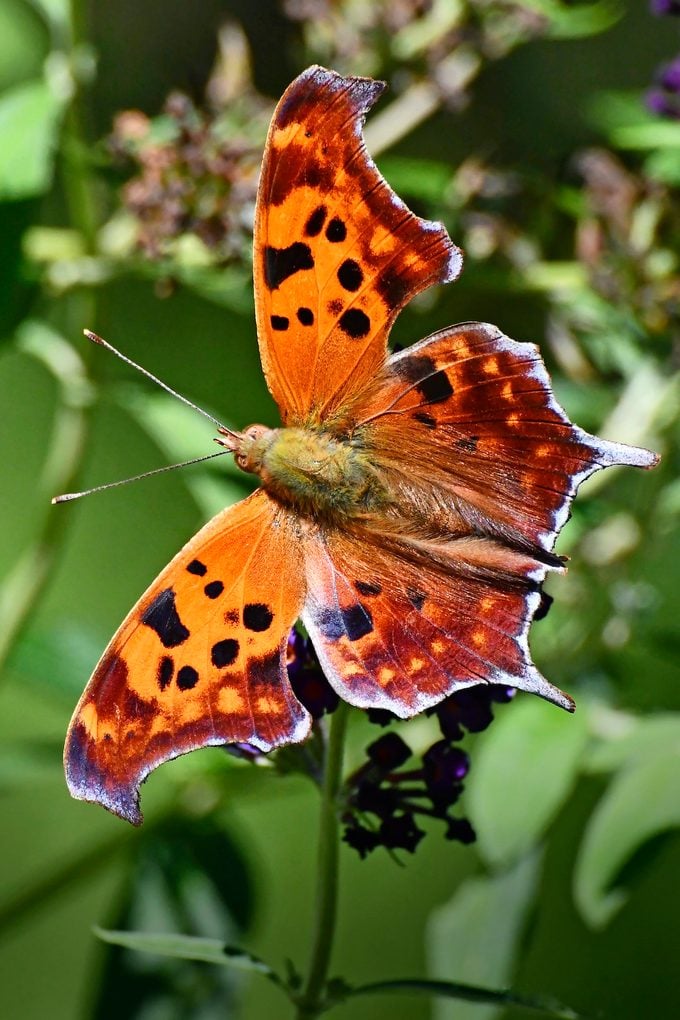
A question mark butterfly’s wings may reach up to 3 inches wide, while an eastern comma’s wingspan can be as small as 1 3/4 inches.
“This is an infrequent visitor to our backyard butterfly bushes. But working at home allowed me the opportunity to see and photograph the beautiful question mark butterfly (above), providing a silver lining to the pandemic. The brilliant orange topside of its wings is a dramatic contrast to the underside, which perfectly mimics a dead leaf. Consequently, this butterfly is easily overlooked if its wings are closed,” says Birds & Blooms reader Thomas Wetmore.
Meet 11 kinds of butterflies worth knowing.
Host Plants
Most caterpillars go through five stages, known as instars. Question mark and comma caterpillars rely on elms, nettles, hackberries and hops for host plants.
Multiple Generations
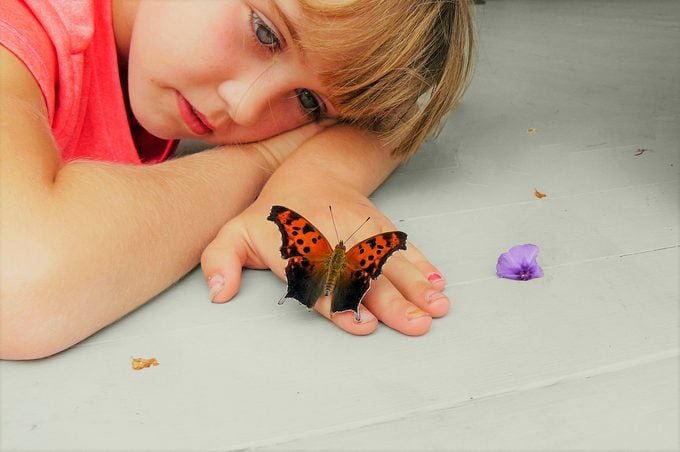
These butterflies typically reproduce twice a year. The generation seen in summer has darker wings, and those appearing in fall and winter are lighter in color.
“I was on the porch with my dear granddaughter Ava when we saw this newly emerged question mark (above) as it dried its wings. When Ava lay down to get a closer look, the butterfly simply climbed on to her hand. This photo captures the wonders of nature through the eyes of a fascinated child. If we could all see like this, imagine the joy we could experience,” says Birds & Blooms reader Rebecca May.
Follow the stages of the monarch butterfly life cycle.
Caterpillar
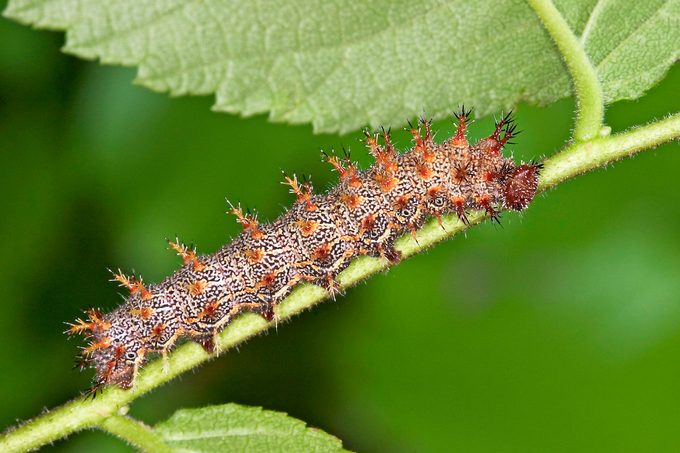
Rust orange to yellow branching spines covering the body is the best clue for identification. Also look for a black body littered with tiny white and yellow dots arranged in a somewhat linear pattern.
Eggs
Their eggs are green with vertical ridges.
Monarch eggs or aphids? Here’s how to tell the difference.
How to Attract a Comma and Question Mark Butterfly
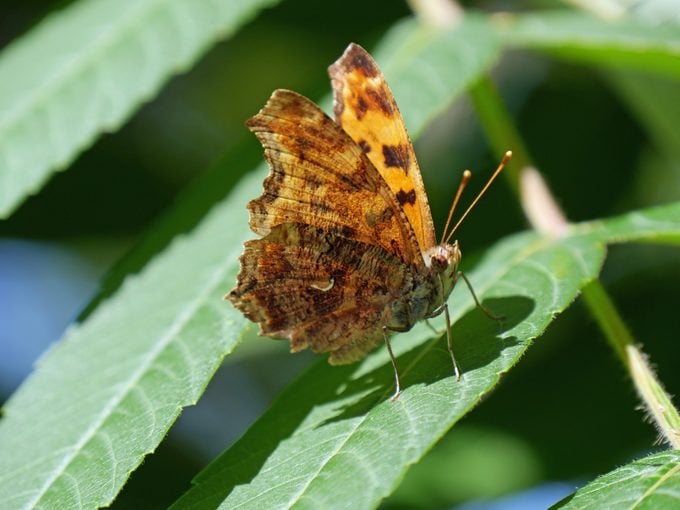
Adult punctuation butterflies typically prefer three types of food sources: tree sap, decaying fruit and carrion. As for luring these butterflies to your own garden, the most important thing to know is that this genus of butterflies is rarely found collecting nectar from flowers. You’ll see these butterflies more frequently in wooded areas, as their caterpillars host almost exclusively on trees. To draw them to your yard, try leaving out very ripe or even rotting fruit like bananas or oranges. Place the fruit in a shallow dish of water to keep ants off.
Learn how to make a DIY butterfly puddler.
Range and Habitat
Look for question mark butterflies throughout the eastern U.S. to the Rockies and into southern Canada. They are common in populated areas such as parks and backyards, as well as woodland clearings and streams.
Look for comma species from coast to coast. You may see eastern commas (Polygonia comma) and gray commas (Polygonia progne) in the eastern part of the country. In the west, you’ll see hoary commas (Polygonia gracilis) and satyr commas (Polygonia satyrus). They all look very similar and are instantly recognizable with their sharp wing angles, bright orange coloration on top, and drab underwings with comma markings.
Discover 11 fascinating monarch butterfly facts.
Year-Round Visitors
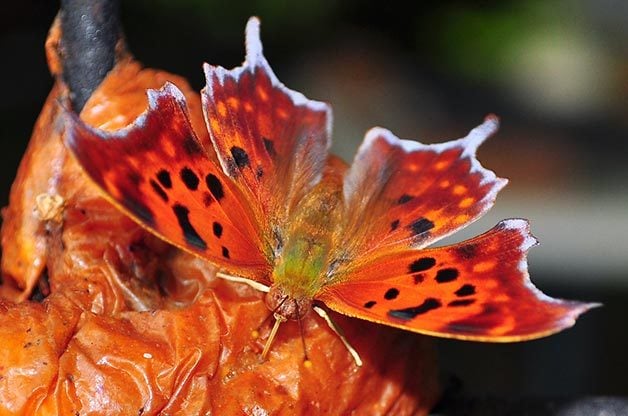
You might spot both question mark and comma butterflies during any of the 12 months of the year. They overwinter as adults, tucked into safe spaces, but may come out on unseasonably warm days.
Next, meet the vast (and fast!) skipper butterflies.
